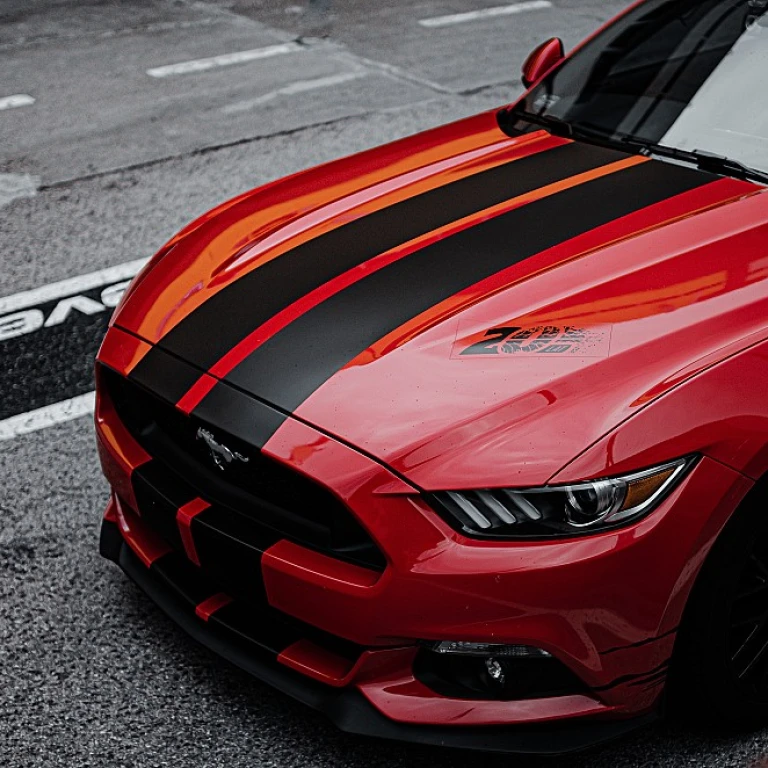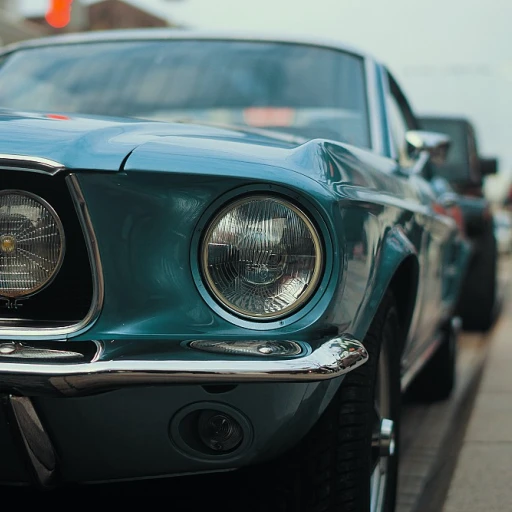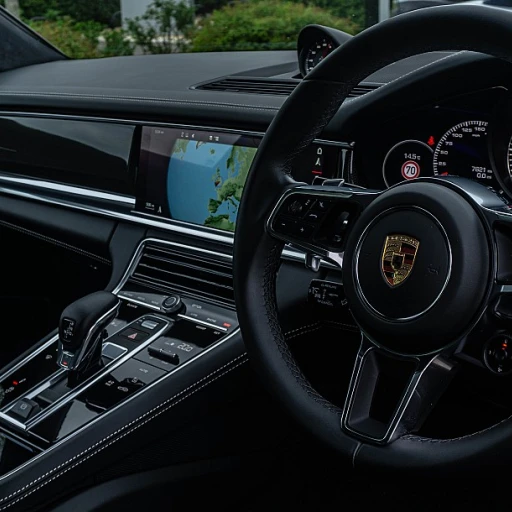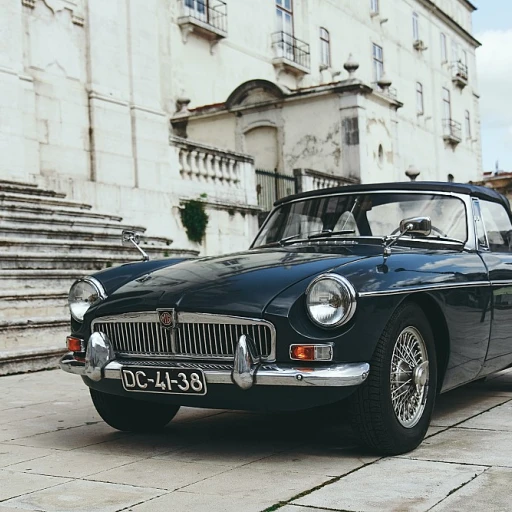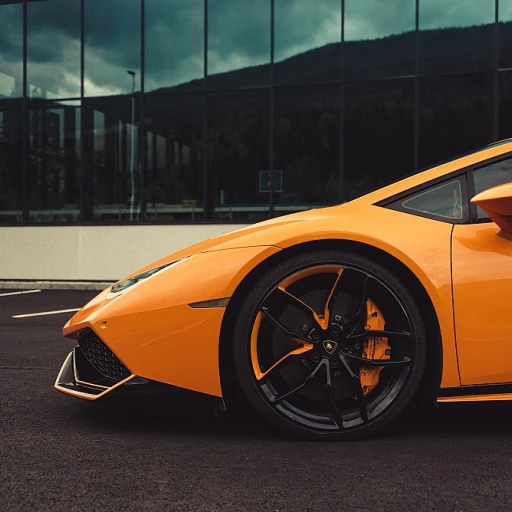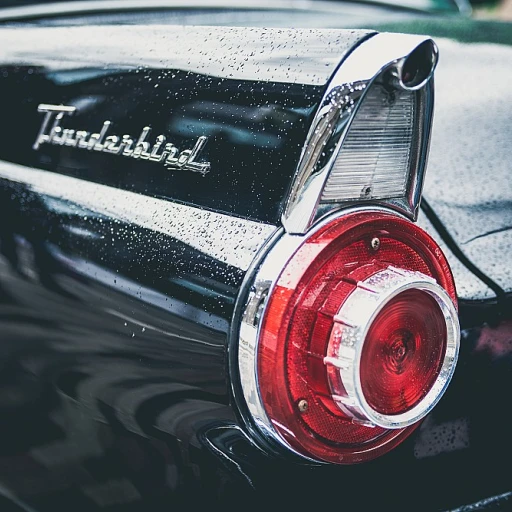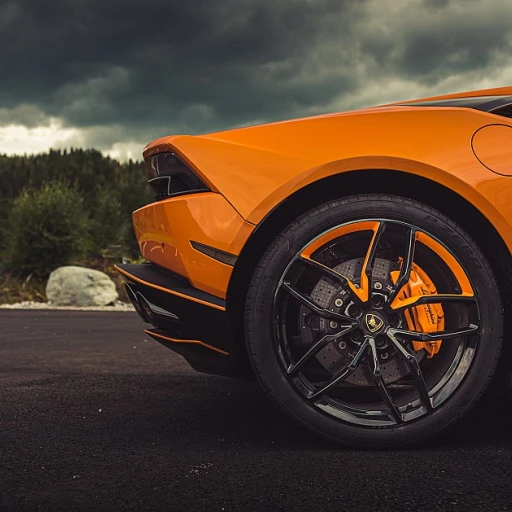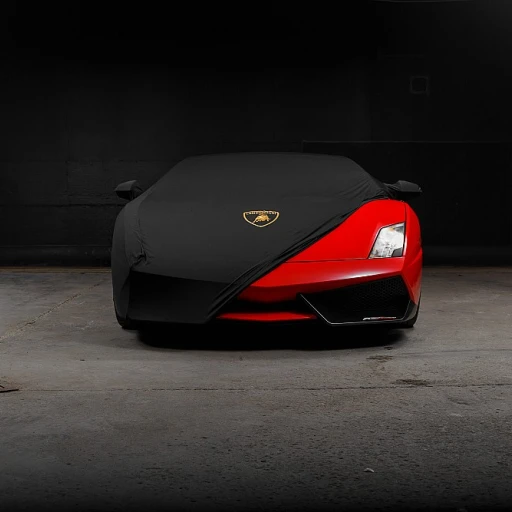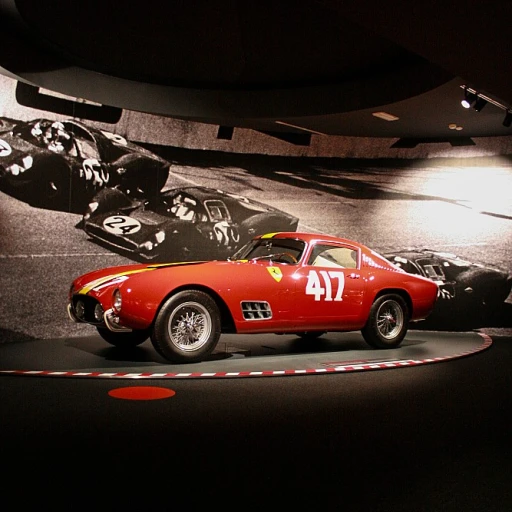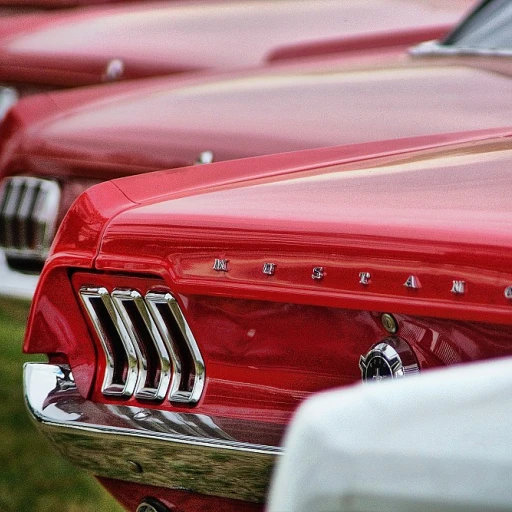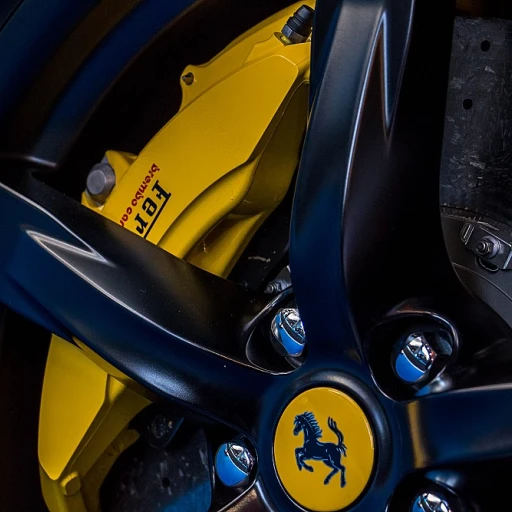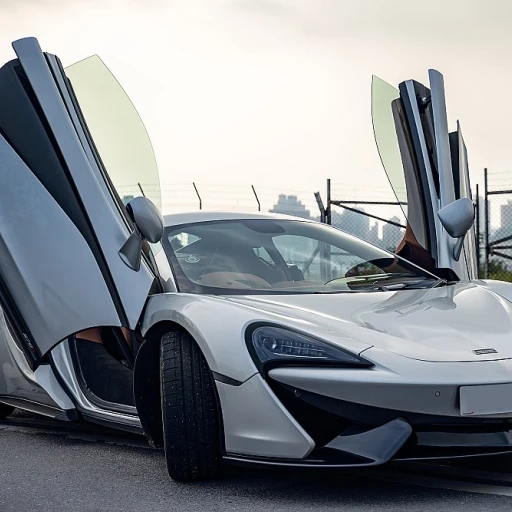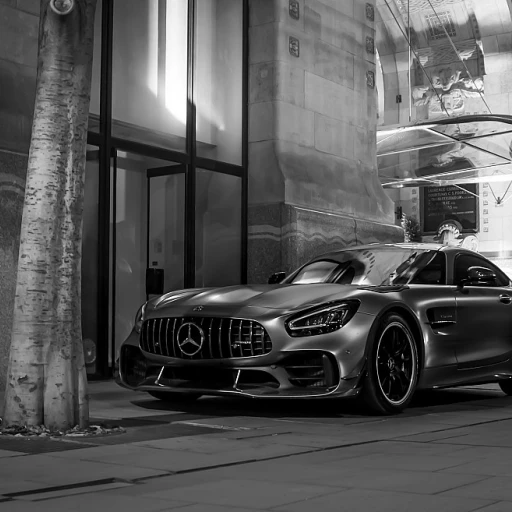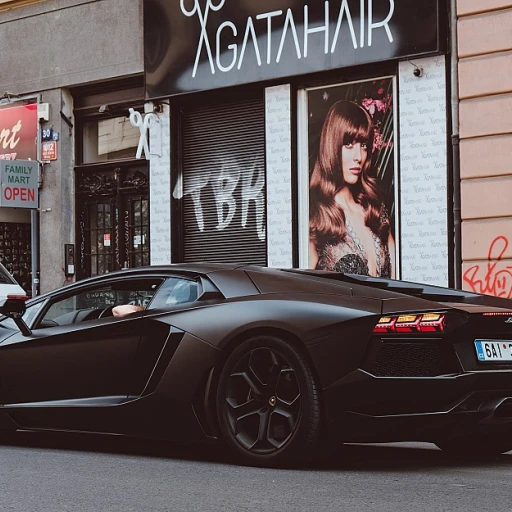
The allure of sports car sketches
A captivating blend of engineering and artistry
Sports car sketches are not just a pastime for hobbyists; they represent a unique fusion of engineering precision and artistic expression. Drawing sports cars requires attention to detail, a deep understanding of car anatomy, and an artistic touch that can bring out the spirit of these high-performance vehicles.
From rough drafts to polished masters
As any artist or designer will tell you, the process of creating a car drawing can start with something as simple as a rough sketch. These initial drawings of sports cars often focus on capturing the basic proportions and lines that define the vehicle's shape. Over time, these sketches are refined and detailed, transforming into polished masterpieces that highlight every curve and design element.
Expressing speed and elegance
A well-drawn sports car sketch captures more than just the vehicle's appearance; it conveys its speed, power, and elegance. Artists frequently explore different ways to unleash the thrill of fast luxury cars through their work, experimenting with various techniques to bring out the dynamic lines and sleek profiles that make these cars so beloved.
Vector illustrations: precision in art
Vector illustrations offer precision
Vector illustrations have become a staple in the world of car sketches, offering both accuracy and scalability. Unlike traditional drawings, vector graphics use geometrical formulas to create sharp, scalable images. This technique particularly shines when it comes to complex car designs, such as the curves of a Bugatti or the muscular lines of an American car.
Expert insights highlight the efficacy of vectors in creating detailed vehicle representations. John Hanse, a lead designer at AutoGraph Inc., states that 'Vector illustrations allow for precision that is almost impossible to achieve with freehand drawing.' This is mainly due to the algorithmic nature of the images, which means they can be resized without any loss of quality.
Creating multiple views with accuracy
The ability to create accurate multi-views is a game-changer in car drawing. Side views, rear views, and even interior layouts can be rendered with impeccable detail. For instance, the iconic Bugatti Veyron super sport can be illustrated from every conceivable angle, ensuring that every curve and line is captured meticulously.
Case studies show that design firms like Pininfarina have successfully utilized vector illustrations in creating concept cars. They have been able to showcase cars like the Peugeot with high attention to detail, making it easier for manufacturers to translate these designs into actual production models.
Trends in vector car illustrations
Recent trends have seen a rise in vector illustrations as a popular form of automotive art. According to a 2022 report by AutoDesign Trends, 45% of professional automotive designers use vectors to bring their concepts to life. This trend is only growing as more designers appreciate the ease and precision that vector illustrations offer.
Moreover, the future seems promising with the advent of digital and hybrid techniques, allowing artists to combine traditional drawing methods with advanced vector techniques. This not only enhances the final illustration but also speeds up the production process.
Looking to learn more about the allure of luxury sports cars? Check out our detailed exploring the allure of luxury sports cars brands article for a deeper dive.
Iconic sports cars and their artistic renditions
Capturing the essence of legendary car models
When it comes to iconic sports cars, the Bugatti Veyron stands as a quintessential symbol of speed and luxury. Expert automotive designer Dan Palatnik emphasizes the meticulous detail that goes into capturing the essence of such models. He notes, "Every line and curve of a Bugatti tells a story of engineering prowess and design excellence." The Bugatti Veyron, with its sleek front and aerodynamic side view, showcases the artistry behind sports car illustrations.
Famous cars from hollywood blockbusters
Who could forget the roaring American muscle car, Ford Mustang, from the movie 'Gone in 60 Seconds'? Or the sleek white background silhouette of the Acura TSX in 'Fast and Furious'? These cars not only burn rubber on-screen but also leave an indelible mark in the minds of artists and car enthusiasts. Drawings of these vehicles are more than just depictions; they capture the raw essence of speed and power, making them timeless icons in both film and car art history.
Muscle cars: american classics that inspire artists
The 1969 Chevrolet Camaro and the 1970 Dodge Challenger are iconic examples of American muscle cars that inspire countless car sketches and drawings. Muscle car art often highlights the raw power and aggressive designs that define these vehicles. According to a study by the Luxury Car Institute, more than 60% of car enthusiasts have a particular fondness for muscle car illustrations, viewing them as symbols of American automotive history and culture.
European legends in artistic renditions
European luxury cars like the Aston Martin DB5 and the Jaguar E-Type have long been subjects for artists. Seen in side view sketches and detailed vector illustrations, these vehicles combine elegance with performance. According to top illustrator Romain Hugault, "Drawing a Jaguar E-Type is like creating art on wheels; every angle speaks of sophistication and beauty." Such drawings not only serve as artistic masterpieces but also elevate the status of these renowned vehicles.
The art of side and rear views
Mastering side and rear views in car drawings
The devil is in the details, and this is especially true when it comes to drawing sports cars. The side and rear views of a vehicle are not just critical angles that highlight the car's design and aerodynamic features, but they also bring out its personality and stance. Think about the iconic Bugatti Veyron. Mastering the side view of this supercar involves capturing its elongated, aerodynamic silhouette — a feat that separates casual doodles from professional-grade sketches.
Drawing the essence of speed and power
Drawings of sports cars like the Bugatti Veyron or American classics like the Ford Mustang often focus on the rear view, where the car’s powerful stance is emphasized. According to Tim Brown, a veteran automotive artist, “The rear view, with its curves and taillights, showcases the vehicle’s strength and agility. Precision here can make your drawing come alive.” It's no wonder car enthusiast flock to drawings featuring the rear view, paying attention to exhaust details and rear spoilers.
Side view: the beauty of form and function
When it comes to the side views, artists need to also consider vehicle functionality and design. The smooth, sleek lines represent the speed and agility that sports cars are identified with. Vector illustrations can enhance these details helping artists maintain proportions and ensure scalability.
Modern techniques enhancing timeless designs
With technologies improving, artists now rely on digital tools to perfect these angles, mixing traditional drawing techniques with modern digital prowess. These tools allow for a more detailed and precise portrayal of the car’s complex design, resulting in a more realistic end product. If you’re interested in unleashing the thrill of fast luxury cars, digital tools can be a game changer.
Muscle cars: a classic American art form
American muscle cars: an enduring legacy in art
The captivating allure of drawing sports cars isn't complete without diving into the rugged world of classic American muscle cars. These powerful machines, known for their high performance and aggressive design, have a special place in automotive art.
Not only do they represent a bygone era of American automotive excellence, but their bold lines and beefy contours make them a favorite among artists and illustrators. Creating a car sketch of classics like the Ford Mustang or Dodge Charger is both a challenge and a delight.
Side, front, and rear views: a comprehensive approach
Sketching muscle cars requires precision to capture their iconic profiles accurately. The side view reveals the car's elongated shape, giving a sense of speed and power, while the front view showcases the aggressive grille and headlight designs. The rear view often emphasizes the broad, muscular stance that defines these vehicles.
Many artists prefer vector illustrations for these sketches to maintain clean lines and detailed elements. It's a method that allows for high precision and can be easily adjusted to highlight specific features of the car.
Case study: the Ford Mustang
An excellent example of muscle car art can be seen in the many renditions of the Ford Mustang. This icon has been drawn, painted, and rendered in countless ways over the decades. From its angular 1960s form to the modern-day iterations, the Mustang remains a favorite subject for artists. Its white background illustrations are particularly striking, allowing the car’s powerful lines to stand out dramatically.
Classic american cars in contemporary art
Despite the shift towards digital and hybrid drawing techniques, the charm of classic muscle cars continues to inspire artists. Platforms like Stock Pictures Royalty Free provide a treasure trove of professional images for creators to reference in their work.
Moreover, the resurgence of interest in classic American cars has spurred numerous art exhibits and online galleries dedicated to these beloved vehicles. Whether drawn by hand, rendered digitally, or a combination of both, the legacy of muscle cars lives on in the world of sports car drawing.
Incorporating muscle cars into car art not only pays homage to a significant era in automotive history but brings a unique and dynamic element to the collection of sports car sketches.
The evolution of car drawing techniques
Precision and detail in modern car art
Car drawing techniques have come a long way since the early days of automotive design sketches. The transition from hand-drawn sketches and blueprints to advanced digital illustrations has revolutionized the industry. This shift has not only streamlined the design process but has also introduced an unprecedented level of precision and detail.
One of the most significant advancements in this field is the use of vector illustrations. Unlike traditional raster-based drawings, vector illustrations can be scaled infinitely without losing any quality. This is particularly useful for producing detailed designs of sports cars, where every curve and line needs to be perfect. According to a report by Adobe, about 70% of professional automotive designers now rely on vector graphics software to create their masterpieces.
When discussing the evolution of car drawing techniques, it's impossible not to mention the role of CAD (Computer-Aided Design) software. CAD has become an indispensable tool in the automotive industry, allowing designers to create 3D models with extreme accuracy. A study conducted by Autodesk found that over 85% of car manufacturers use CAD software in their design processes. This software not only aids in the creation of intricate designs but also helps in testing aerodynamics and other crucial aspects of a vehicle's performance.
The beauty of hand-drawn sketches
Despite the rise of digital tools, the allure of hand-drawn sketches remains strong. Many designers still start their creative process with a simple pencil and paper. This traditional method allows for a level of artistic freedom that digital tools sometimes lack. A survey by DeviantArt revealed that 60% of car illustrators prefer to begin their designs with hand-drawn sketches before moving on to digital platforms.
Hand-drawn sketches capture the essence of the designer's vision in a raw and unfiltered manner. These sketches often form the basis for more detailed vector illustrations and CAD models. The blend of traditional and modern techniques results in a harmonious convergence of art and technology.
Bridging the old and the new
The fusion of traditional and digital techniques has led to a new era in sports car art. Icons like the Bugatti Veyron and the Ford Mustang have been reimagined through this blend of old and new methods, resulting in designs that are both nostalgic and futuristic. For instance, the Bugatti Chiron, designed with the help of advanced CAD software, still exhibits design elements reminiscent of classic hand-drawn sketches.
Moreover, the evolution of car drawing techniques has made it easier for artists to share their work. Platforms like Behance and Dribbble allow designers to showcase their vector illustrations and hand-drawn sketches, reaching a global audience. This increased visibility has not only elevated the status of car artists but has also inspired a new generation to take up the craft.
In conclusion, the evolution of car drawing techniques has made it possible to create designs with unparalleled precision and detail. The combination of vector illustrations, CAD software, and traditional hand-drawn sketches has opened up new possibilities in the world of sports car art. This fusion of techniques ensures that the art of car design will continue to evolve, capturing the imagination of enthusiasts and professionals alike.
Free photos and royalty-free illustrations
Free photos and royalty-free illustrations: accessible art for all
The internet has broadened the horizon for artists and car enthusiasts alike. With vast repositories of free photos and royalty-free illustrations, artistic renditions of sports cars have never been more accessible. Whether you are an amateur artist or a seasoned professional, these resources provide a plethora of images to inspire your next sketch or digital drawing.
Websites like Unsplash and Pixabay offer an extensive collection of free photos and illustrations. For instance, a simple search for 'sports car' on Unsplash yields thousands of high-quality images that are perfect for reference. According to Unsplash, their platform hosts over 2 million images, with a significant portion featuring cars, making it easier for artists to find the perfect stock photos royalty-free.
Vector illustrations have also become a popular medium, especially for those looking to create precise and clean car drawings. Websites like Vecteezy and Freepik offer an array of vector images that can be easily manipulated and customized. These platforms have made it possible for artists to create detailed and accurate illustrations of iconic sports cars like the Bugatti Veyron or classic American cars such as the Ford Mustang. According to Freepik, their library includes over 5 million vector resources, providing substantial material for car drawing enthusiasts.
Even traditional car sketches and side views have found a home on the internet. Platforms like DeviantArt showcase a range of car sketches, from muscle classic American cars to modern hybrids. Artists share their drawing sports car skills, offering both inspiration and instructional content. These communities create a thriving environment for learning and sharing, allowing artists to grow and refine their techniques.
For those interested in the latest trends and expert insights into luxury car designs, check out this deep dive into the world of high-performance vehicles. This resource provides not only high-quality images but also expert commentary on the evolution of car designs and trends in the luxury automotive market.
The democratization of art through free resources has made it possible for anyone with a passion for sports cars to create stunning artwork. From vector illustrations to traditional sketches, the availability of free photos and royalty-free illustrations has enriched the art community, making it inclusive and diverse.
The future of sports car art: digital and hybrid techniques
Digital and hybrid techniques: blending tradition with innovation
The art of drawing sports cars has come a long way from hand-drawn sketches to digital illustrations. One of the most significant transformations in recent years is the integration of digital and hybrid techniques. These innovations not only make the process more efficient but also allow artists to experiment with new styles and perspectives.
A prime example of this shift is the use of vector illustrations. Unlike traditional sketches, vector art provides precision and scalability, allowing for detailed and accurate representations of cars from all angles. This technology has become especially popular among artists who create side, front, and rear views of sports cars, ensuring every curve and detail is encapsulated perfectly.
Pioneering artists in the digital realm
Notable artists like Dennis Brown and Yama Rahimi have mastered the art of digital car design. Brown, who often focuses on classic American muscle cars, combines traditional sketching techniques with digital enhancements to create pieces that are both nostalgic and modern. Rahimi, on the other hand, specializes in vector illustrations of supercars like the Bugatti Veyron, capturing their essence with precision and flair.
These artists often share their techniques through platforms like Behance and Instagram, providing inspiration and education for aspiring car designers worldwide. They use tools such as Adobe Illustrator and Photoshop to bring their visions to life, blending hand-drawn elements with digital refinement.
The rise of hybrid techniques
Hybrid techniques, which merge traditional inks and pencils with digital tools, are becoming increasingly popular. This approach allows for the warmth and authenticity of hand-drawn art while benefiting from the versatility of digital editing. Artists can start with a pencil sketch, scan it into a computer, and then use digital tools to enhance, color, and refine their work.
This combination is particularly effective for creating detailed stock pictures and vector illustrations that can be used in automotive marketing and branding. Companies like Bugatti and Ferrari often commission hybrid art for their promotional materials, highlighting the craftsmanship and attention to detail that goes into their vehicles.
Future trends in sports car art
Looking ahead, the future of sports car art is set to be dominated by even more advanced digital techniques. With the rise of AI and machine learning, artists now have access to tools that can generate realistic car drawings with minimal input. These technologies are expected to further enhance the precision and efficiency of car design, making it possible to create intricate illustrations faster than ever before.
Platforms offering free photos and royalty-free illustrations are also evolving to include more high-quality, digitally-created content. This trend ensures that artists and designers have access to a wide range of resources and inspiration, helping them push the boundaries of sports car art.

